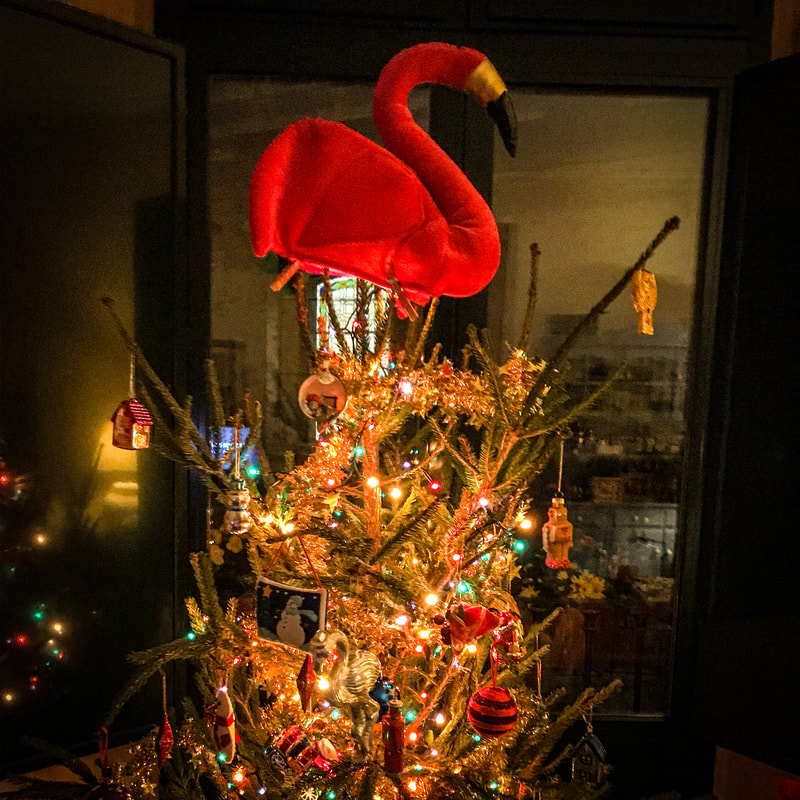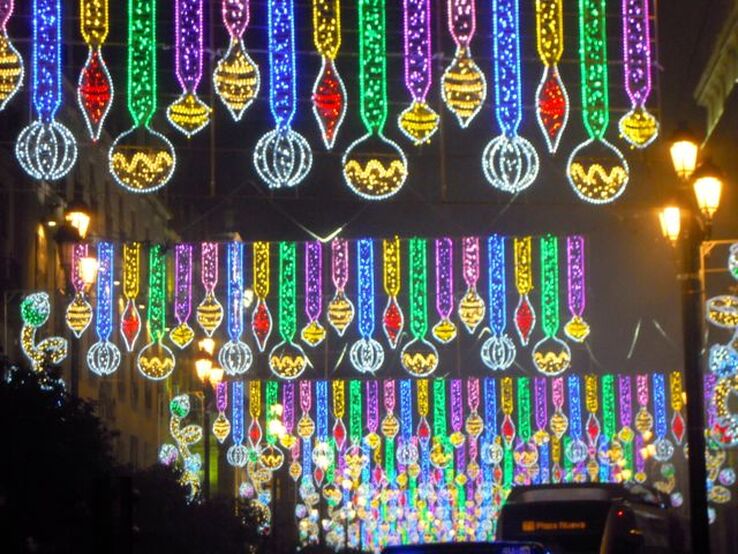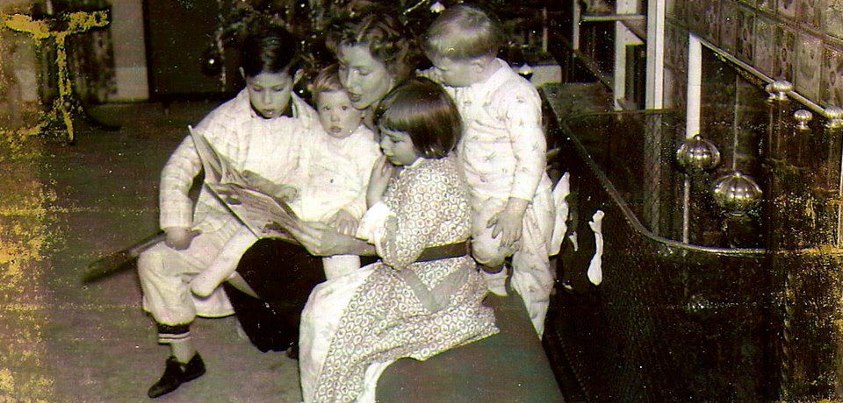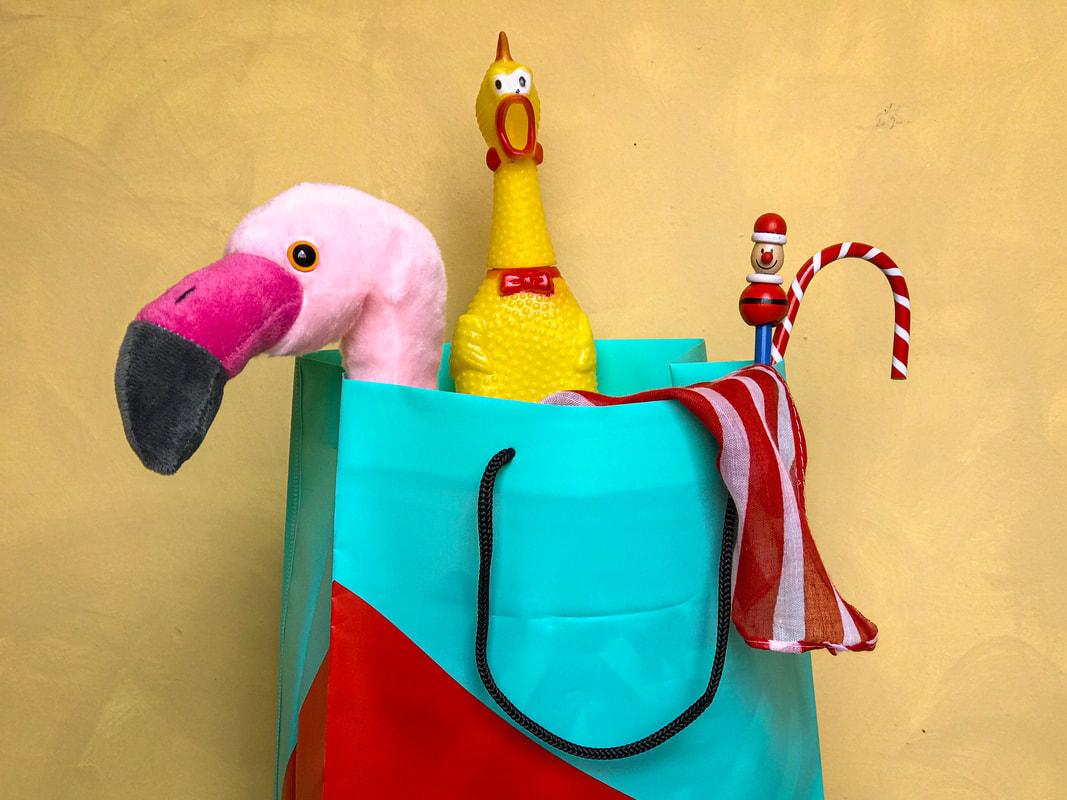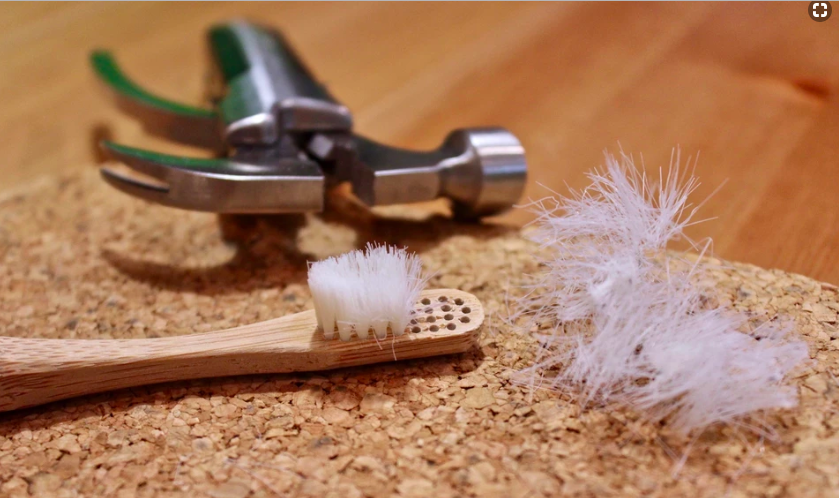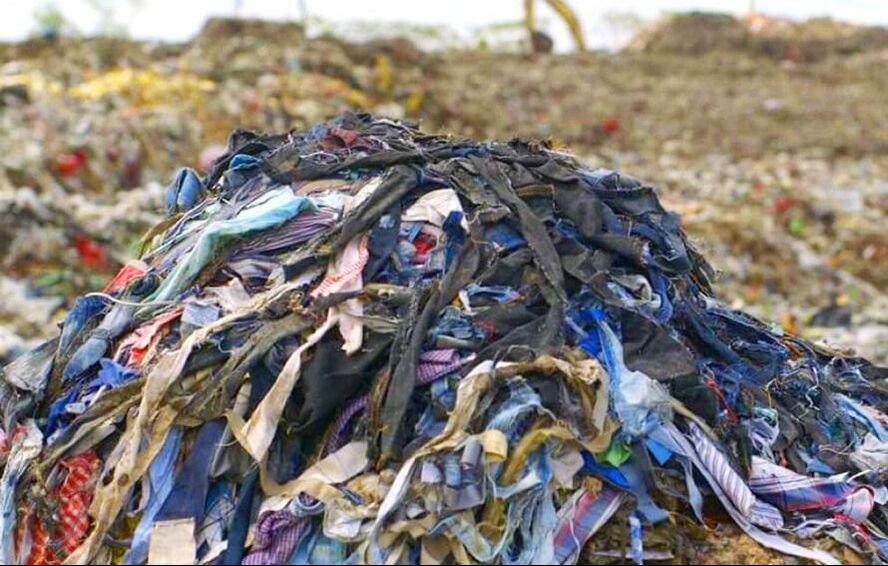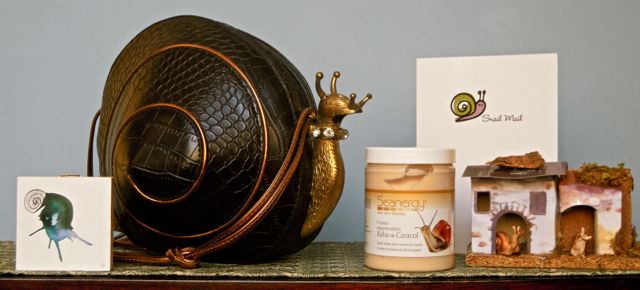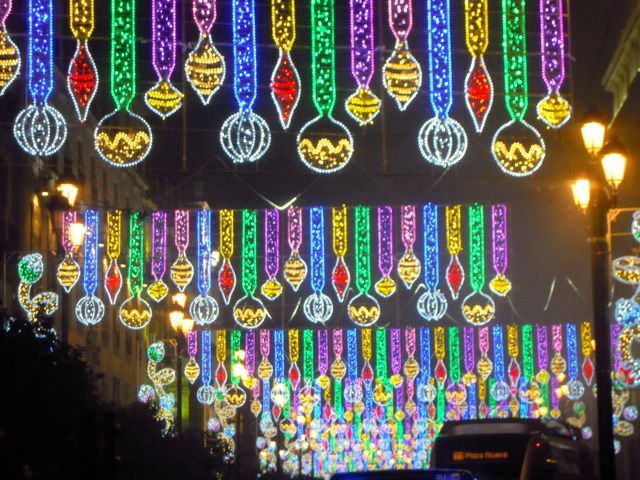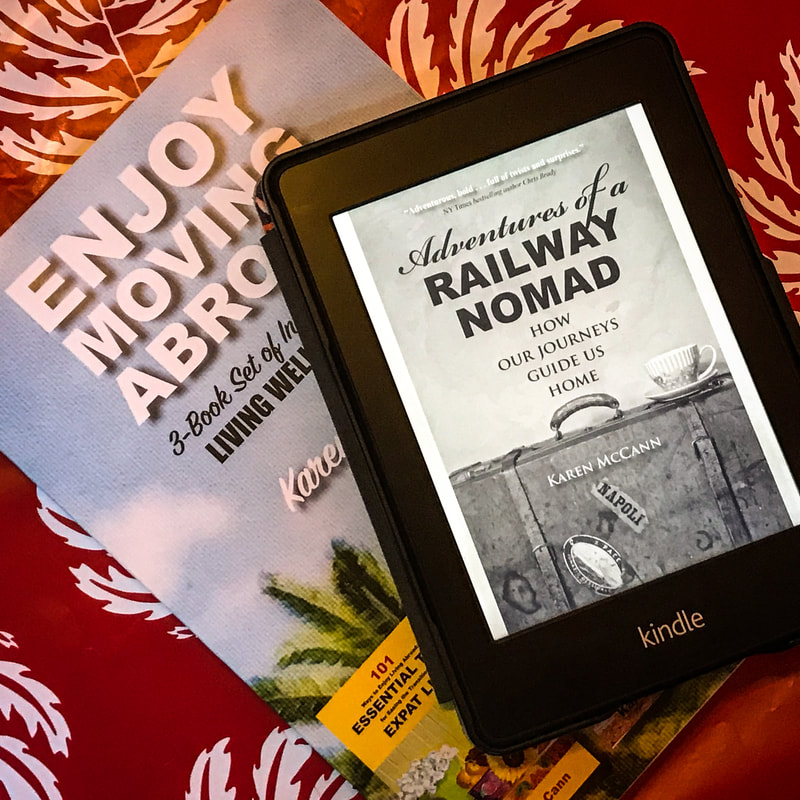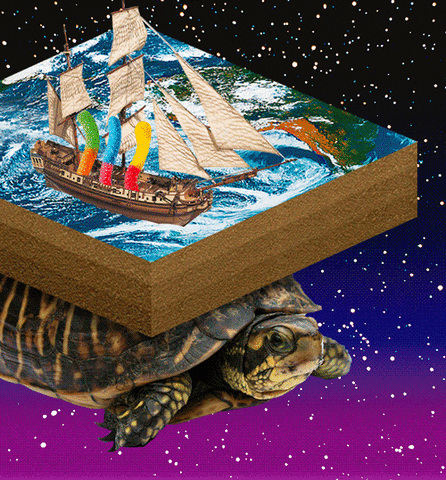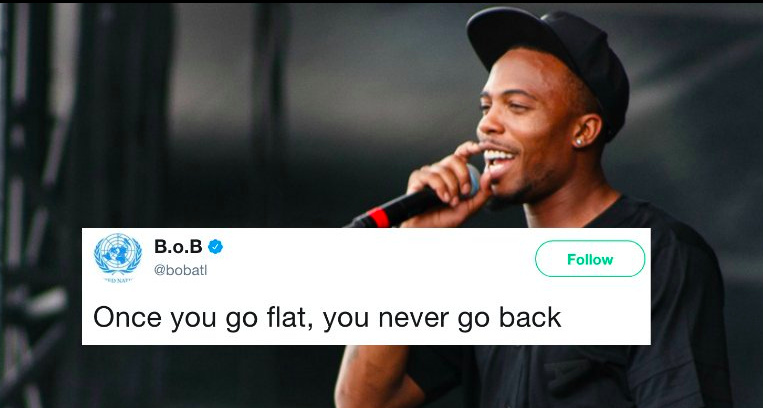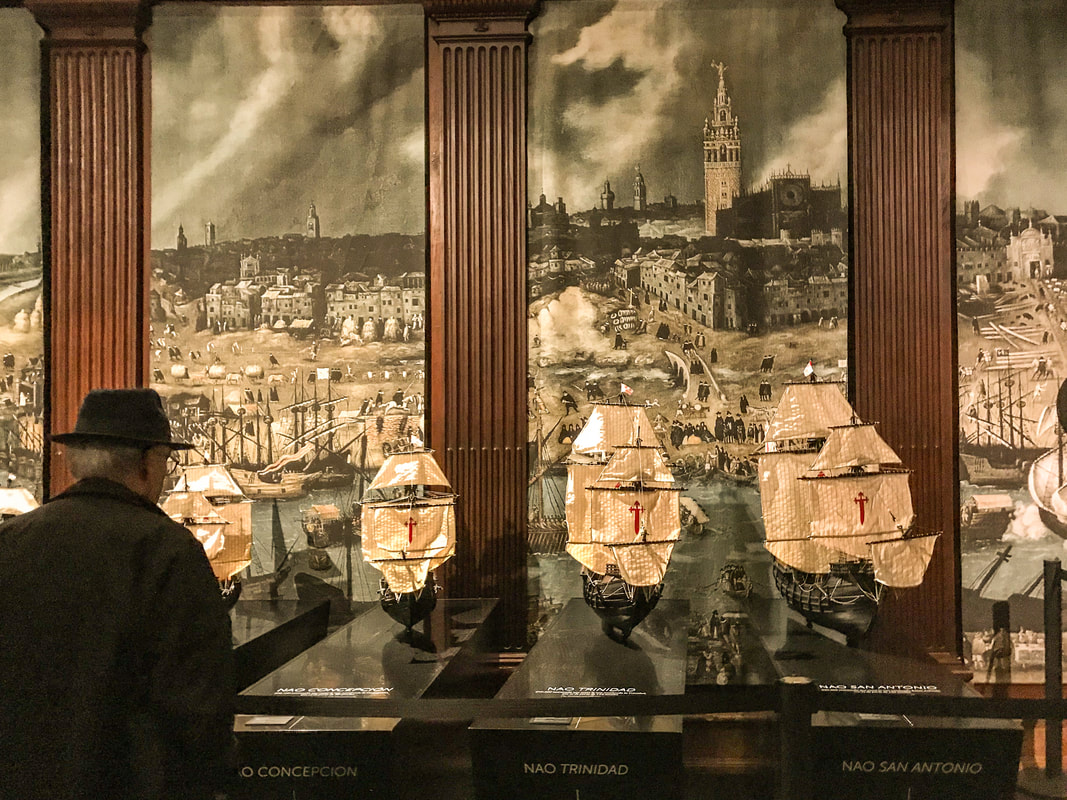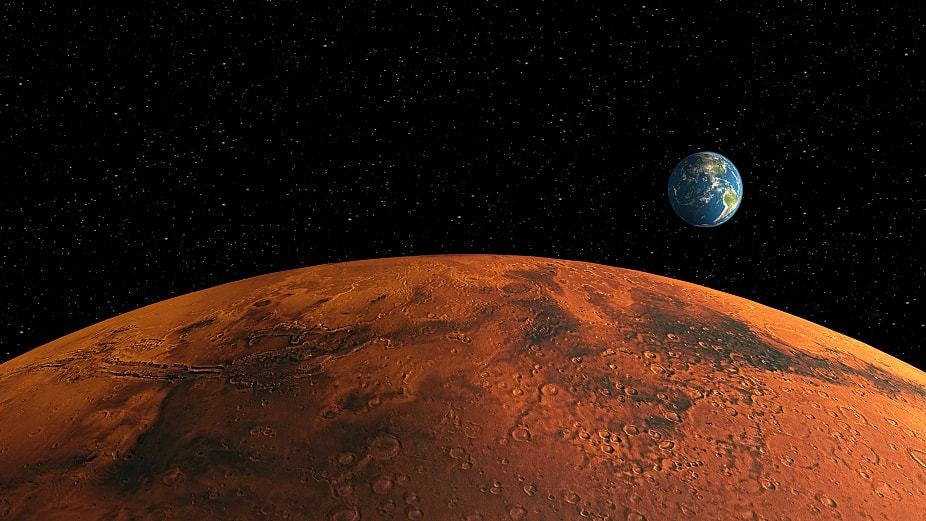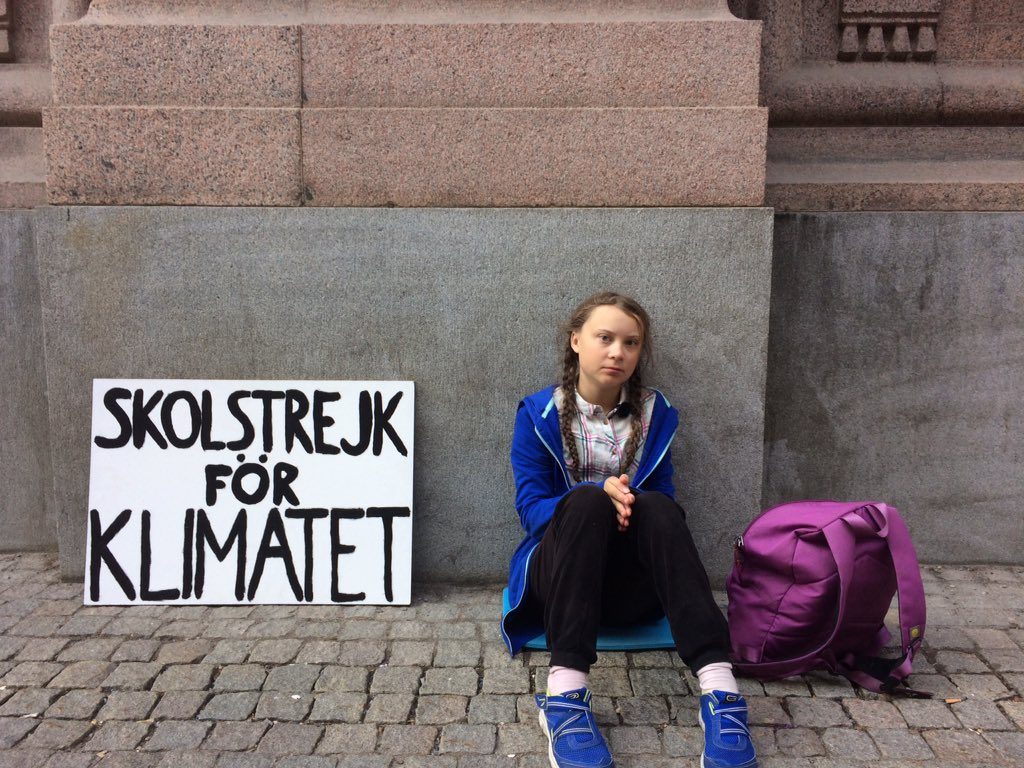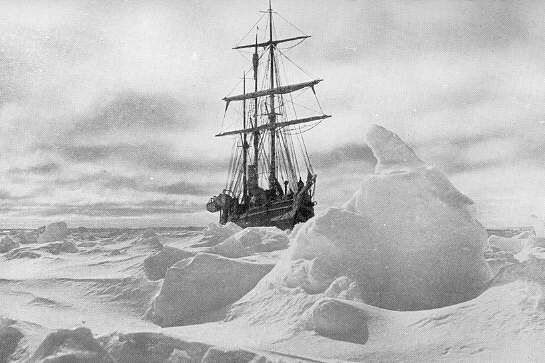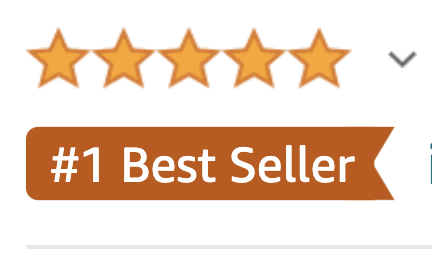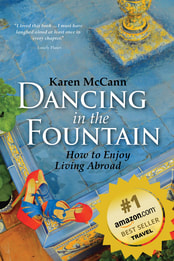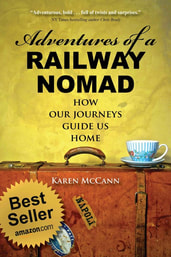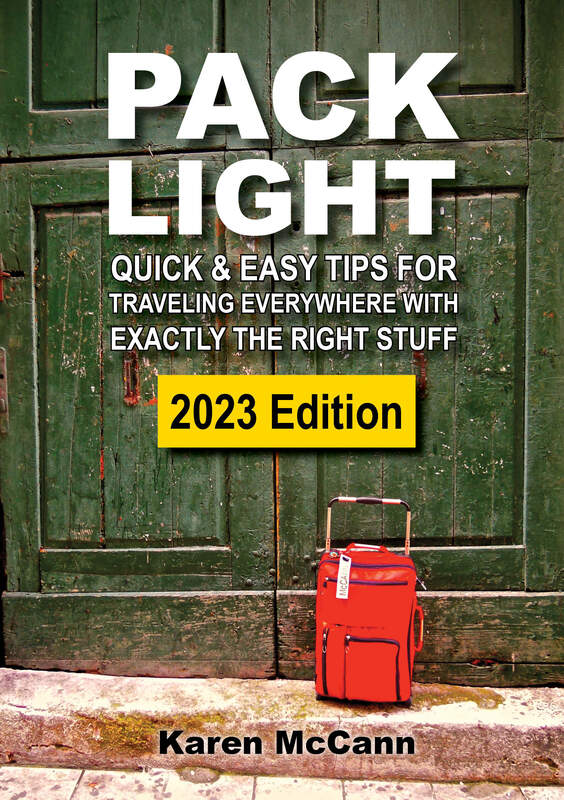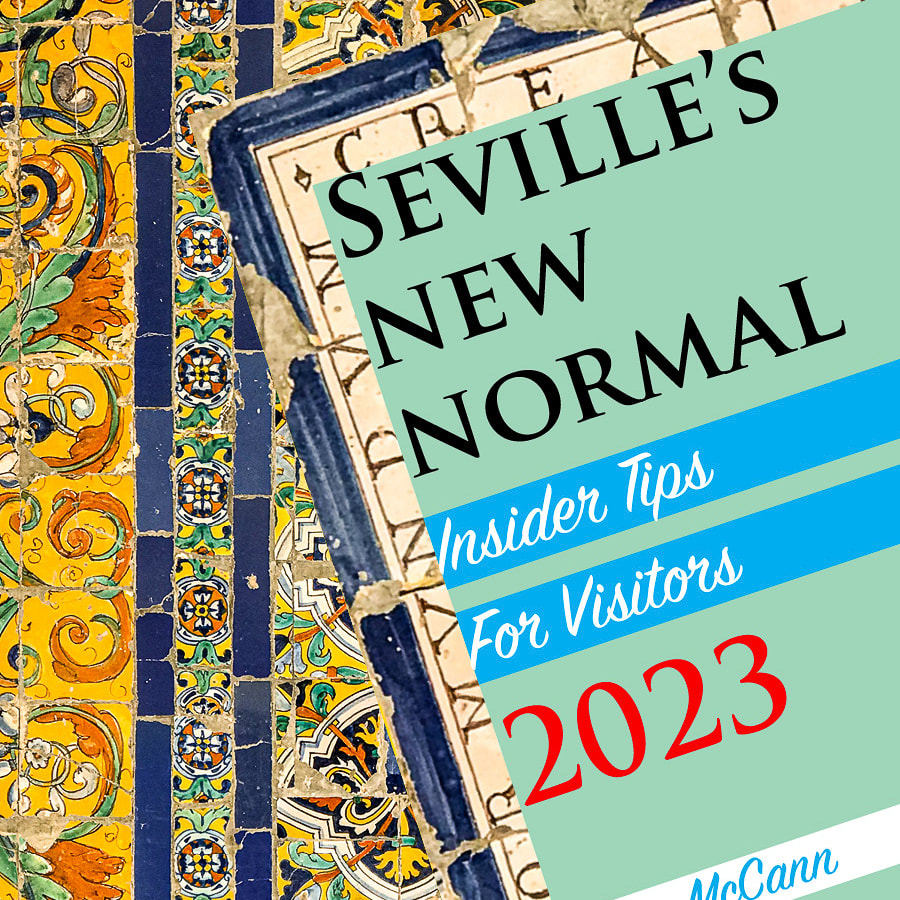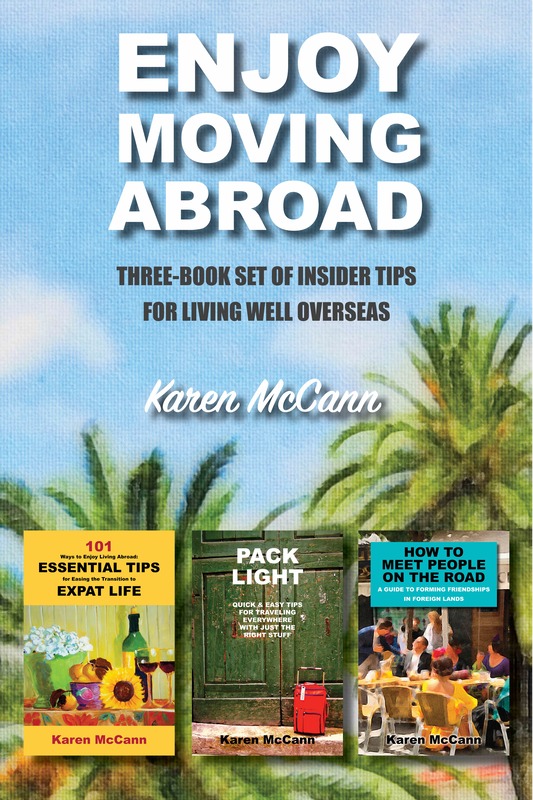|
Greetings from Seville! As the holidays are reaching fever pitch, I figure most of my readers are too busy and distracted to read much this week. I was looking back over past posts for inspiration, and realized this one, which I wrote back in 2012, really says it all. So I’m recycling this nice, short piece, leaving me more time to wrap presents, organize our annual pot-luck feast, and prepare for our 33rd wedding anniversary, which falls on December 27. We're off for a romantic weekend in Valencia — just Rich, me, a cozy hotel room, and the world’s best paella. It doesn’t get better than that. I’ll post again in January. Happy holidays, everyone! “I’ve got something to show you,” said Rich. “Got your camera?” We were out for a stroll, threading our way through the crowded labyrinth of pedestrian streets and alleys that make up Seville’s downtown shopping area. “You bet,” I said. He steered me into the Centro Mercantile, an old club that often houses exhibitions of dubious modern paintings and gorgeous old religious art. I took three steps into the gallery and stopped, gobsmacked by the sight of the entire town of Bethlehem fashioned from 1500 kilos of chocolate, with a river of honey running through it. This is what’s so great about the holidays: people can let their imaginations run wild. Some of my friends have criticized Seville’s downtown lighting display as being too gaudy. But isn’t that what the year-end festivities are all about – creating a sense of wonder and magic? I can remember being a small child, dazzled by the sudden appearance of holiday lights, entranced by the smells of pine and chocolate and wood fires, electrified with anticipation of the treats in store for us. Today, I live thousands of miles from my relatives and many others who are dear to me; they’re scattered around the globe from the Americas to Asia to Europe to Down Under. I’ll never again see everyone I love gathered under one roof. At holiday celebrations I sometimes feel a pang about the faces I don’t see around my table. But I am deeply grateful that I live in an age where I can stay in close contact with those who are far away. We email, we talk on Skype, and when the stars align, we meet up somewhere and enjoy each other’s company. My social circle is no longer geographically defined. It’s a bit like iCloud; my friends are not always physically on hand, but they seem to appear when I need them most. Having friends all over the planet keeps life interesting and makes me feel that I’m a citizen of the world. And that means wherever I am at this time of year, I’m home for the holidays.
14 Comments
 David Niven epitomized the debonair Englishman in the Pink Panther and other films. David Niven epitomized the debonair Englishman in the Pink Panther and other films. Gift giving has always been a tricky business. In the 1930s, when future Hollywood star David Niven was an impoverished young actor, he spent the holidays merrily regifting stuff he’d received — until one day he accidentally sent someone back the leather wallet that he’d sent to Niven … engraved with Niven’s initials. Oops! A few years later, when Niven was involved in the early stages of a romance, he presented the lady with a set of beautifully embroidered handkerchiefs, and she gave him a car. Awkward! The equation gets considerably more complicated these days, when many of us are attempting to be more careful and conscious consumers. I’m in total agreement with the principle, but let’s face it, finding nothing under the tree but long-lasting lightbulbs and biodegradable composting bags isn’t going to make the day feel very jolly. So how do we shop responsibly and festively? Many years ago Rich and I realized that while we love the tradition of opening packages on December 25th, the presents themselves didn’t need to be fancy or expensive. So we agreed that when buying for each other, we’d stick to a modest fixed budget, and buy or make seven small gifts to put under the tree. I can’t tell you what a relief it was to lower the bar on gift-giving and just settle in for a little silly fun. Like what? Well, last year I gave Rich a singing flamingo I found a discount store. (In the video below, it’s shown with a couple of flamingo hats left over from a previous holiday season. They seemed to enjoy the singing, too.) When friends arrived for our holiday feast, everyone fell in love with that singing flamingo. All afternoon I kept noticing various guests wandering about with it tucked under one arm, sitting with it in their laps, or nestling cozily with it on the sofa, as if it was pet, or an honored guest. As I suppose it was. Rich’s best ever gift to me was a couple of snails. It all started six years ago, when I was walking past an old woman selling wild asparagus and live snails, one of which had managed to escape. It was proceeding down the sidewalk with all the determination and speed of which a small gastropod is capable. I mentally cheered it on, and barely remembered to mention the incident to Rich. A month later I found a small package under the tree labeled, “What do we want? Freedom! When do we want it? Now!” Utterly mystified, I opened the box to find a pair of confused snails staring up at me. “You can release them back into the wild,” Rich explained. “It’s like the pardoning of the turkeys at Thanksgiving. How many people get to save a life at the holidays?” Word of this unique gift got around, and pretty soon some friends gave us a family of snails made by their kids from play-dough, launching a tradition of snail-themed gifts that eventually led me to establish my Snail Museum (the only one like it in the world!). Each year Rich crafts something new for the collection. Perhaps a true minimalist would object to my snail collection as not having any practical value. But I say bringing a little more joy and laughter into the world is always worthy of us. In addition to buying less, I try to buy smarter. I cast a suspicious eye on all products, including — perhaps especially — those that claim to be “ecofriendly.” Take the ad I just saw for a bamboo toothbrush subscription that involves sending you a new bamboo toothbrush every month. The manufacturer encourages you to toss the bamboo handle into the compost, advising you not to worry about the non-biodegradable nylon bristles because you simply pull them out with pliers. Like that’s going to happen. Show of hands: how many of you out there actively compost your waste? That would be 16% of you. How many of you would take time to find the pliers and extract the bristles every month? Anyone? Actually, it’s the “every month” part that really bothers me. We don’t need new toothbrushes every 30 days. The American Dental Association and manufacturers such as Oral-B, who desperately want you to buy more of their products, only recommend replacing toothbrushes every three to four months, and I suspect it’s a lot longer than that for many of us. There’s nothing wrong with a bamboo toothbrush; clearly it’s better for the planet than a plastic one. But these so-called “ecofriendly” manufacturers are trying to convince us to look at toothbrushes as disposable items to be tossed out while they’re still perfectly serviceable, only a quarter of the way to retirement age. No doubt they got the idea from the clothing industry. As you may have heard, there’s such a glut of cheap clothing around the world that 85% of all unwanted garments end up in a landfill — yes, including most of those you donate to charity and many new items that have been returned unworn. I’m not saying you shouldn’t buy reasonably priced clothes; on my holiday budget, it’s all I can afford for Rich, who luckily likes anything made from plaid flannel and never looks at labels. But if your family has a tradition, say, of giving each other joke gifts of hideous holiday sweaters every year, with the virtuous intention of donating them to charities afterwards, it might be time to come up with an alternative. For instance, you could circulate photos of the most ghastly holiday clothes online and make snarky remarks about them. Here are a few of my faves. You can provide your own snarky remarks in the comments section below this post. I’ve read the tradition of gift giving at the winter holidays didn’t reach the USA until the nineteenth century, and that in those days, the gifts tended to be gimcrack — cheap and cheerful little knickknacks. I say let’s bring back gimcrack! We can stop filling corporate coffers and municipal landfills — and still have the fun of pardoning snails, singing along with flamingos, and spending more time and less money celebrating with people we love. And I believe our lives will be the richer for it. YOU MIGHT ALSO ENJOY Only 66% of millennials believe the earth is round, according to one poll*, which (for those of us who still place our faith in math) means 34% of young Americans suspect or "know" our home planet is flat. In 2017 rapper and conspiracy theorist B.o.B. tweeted he was crowdfunding his own satellites to go up in space and prove his flat-earth theories. NBA star Kyrie Irving said, “This is not even a conspiracy theory. The Earth is flat. It’s right in front of our faces. I’m telling you, it’s right in front of our faces. They lie to us.” (I’m not even going to get into the irony of incorporating the phrases “This is not even a conspiracy theory” and “They lie to us” in the same rant.) Photos of the earth from space are dismissed as fakes, part of a government plot to fool us all. Apparently the flat-earthers haven’t caught up on the news from 500 years ago. In 1519 Ferdinand Magellan assembled a fleet of five ships and set off from Seville, Spain. The fleet headed steadily west for four years until eventually, with Magellan and most of his crew dead, three ships lost and one deserted, the sole remaining ship limped into Seville’s port — proving (sorry B.o.B. and Kyrie Irving) that the earth is round. The story of this extraordinary voyage is the subject of a marvelous new exhibition on display in Seville’s Archives of the Indies — a must-see for anyone (and especially you, flat-earthers!) coming to town between now and February 23, 2020. Magellan was a spectacular navigator and an abominable diplomat. He quarreled with his own ruler, King Manuel I of Portugal, and had to resort to petitioning Portugal’s archrival, the King of Spain, who grudgingly financed the voyage in hopes of putting one over on the Portuguese by finding a better route to lands rich in expensive spices. Magellan’s Spanish crew hated him for being Portuguese, for being kind of a jerk, and for withholding key information about the voyage. Magellan had a big secret: earlier explorers had told him about a passageway cutting through the tip of South America. This passage, now knows as the Strait of Magellan, would not only make the journey shorter, it would avoid one of the most violent and hazardous seas on the planet, running between Cape Horn and the Antarctic Peninsula. How bad was it? I’m not sure, but here’s what they knew to expect crossing the Atlantic. I know, right? Who would be crazy enough even to think of spending months crossing water like this in a ship 20 meters long? With everyone’s life constantly in jeopardy, it’s not surprising the story of this voyage is full of conflict, mutinies, heads being cut off, people left to die on desert islands, cannibalism, starvation, desertion, and Magellan’s death in a ridiculous show of bravado to impress a Filipino chief. There was plenty of macho idiocy to go around, but there was also a steely core of courage that I couldn’t help but admire. History books refer to those days as the Age of Exploration, but never doubt that humans are still boldly going where no one has gone before. Two years ago I heard NASA scientist Amaya Davis talk about the Mars expedition planned for the 2030s. Young men and women are already in training and vying for seats on the first voyage to the Red Planet — even knowing that it is a one-way ticket. The amount of hardware and fuel they will use up to reach Mars is enormous, and they simply can’t carry enough extra to make the return journey feasible. “Why would anyone do that?” I asked Amaya. “They want a place in history.” As with Magellan and his crew, I’m in awe of the courage of these future astronauts, even while thinking they have to be more than halfway nuts. Rich and I have definitely decided not to sign up for that trip. But I’m glad so many brave people have chosen to go into space, if only to be able to properly debunk the flat-earthers. While the NASA crews are all volunteers, many of Magellan’s sailors were shanghaied, kidnapped on the streets of various ports and thrown aboard to replace crew members lost to scurvy, suicide, accidents, execution, or worse. The kidnapped sailors had to find unexpected depths of valor to face a life-or-death struggle they never signed on for, in the most daunting circumstances imaginable. I suspect Greta Thunberg feels much the same way. She had no hand in creating the climate crisis, everyone's existence is at stake, and we're dealing with a deck stacked in favor of failure. I can only imagine the bravery it took for her to begin her first, solitary protest vigil outside the Swedish parliament. “It is still not too late to act [to combat climate change],” she said in April. “It will take a far-reaching vision, it will take courage, it will take fierce, fierce determination.” We know Greta has that kind of courage and determination, but do we? I guess we'll find out. Nobody wants to cope with climate change, but it turns out that we are the generation that, like the shanghaied sailors, woke up to find ourselves on a ship floundering in uncharted waters, headed for a future over which we have slim control and no guarantees of survival. So where does a die-hard optimist like myself find room for hope? I’m heartened by the knowledge that humans have a pretty good track record of finding inner strength when they need it most. During one of Britain’s darkest hours Winston Churchill said, “It is not enough that we do our best. Sometimes we must do what is required.” A lot of people had the courage to step up then and do what was required. I believe the majority of us have the fortitude to stand up and do our bit now. One thing inspiring Londoners in the Blitz, sailors of yore, and astronauts of the future is the clear certainty that our survival depends on working together. Our ancestors survived on the African savannas — surrounded by creatures that were bigger, fiercer, and better equipped with teeth and claws — because humans learned to cooperate with one another. And they refused to give up. Like the early explorers, like the Mars mission team, like Greta Thunberg, we know that when there is no going back, we must find a way to move forward together. And I believe we will. *Scientific American took a hard look at the original data compiled by YouGov and found statistical discrepancies that cast doubt on the claim that only "66% of millennials believe the earth is round." In addition to inflating the percentage, the term "millennial," normally defined as those born 1981 to 1996, here refers to 18- to 24-year-olds. So there are plenty of questions about the YouGov statistic suggests. Whatever the true numbers, the fact that anybody believes the earth is flat remains deeply worrying. YOU MIGHT ALSO ENJOY |
This blog is a promotion-free zone.
As my regular readers know, I never get free or discounted goods or services for mentioning anything on this blog (or anywhere else). I only write about things I find interesting and/or useful. I'm an American travel writer living in California and Seville, Spain. I travel the world seeking eccentric people, quirky places, and outrageously delicious food so I can have the fun of writing about them here.
My current project is OUT TO LUNCH IN SAN FRANCISCO. Don't miss out! SIGN UP HERE to be notified when I publish new posts. Planning a trip?
Use the search box below to find out about other places I've written about. Winner of the 2023 Firebird Book Award for Travel
#1 Amazon Bestseller in Tourist Destinations, Travel Tips, Gastronomy Essays, and Senior Travel
BLOG ARCHIVES
July 2024
CATEGORIES
All
|
